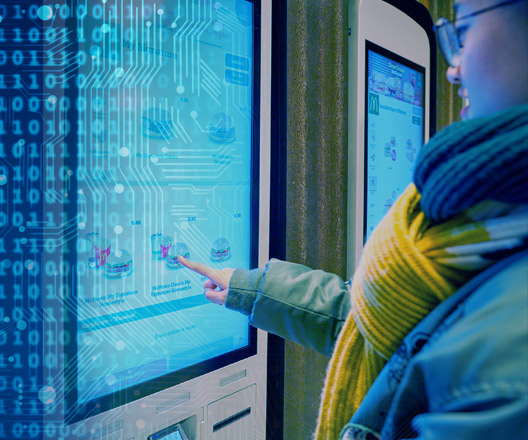
Machine learning is all about recognizing subtle patterns in data and then extracting important insights to solve complex problems. Machine learning helps organizations change generic, one-size-fits-all processes into efficient, contextually sensitive processes that save time, effort, and money.
Vending machine management is an example of a set of processes that machine learning can analyze and enhance. The vending machine industry represents a huge opportunity, with as many as 31.6 million machines in operation and a market size of over $30 billion by 2025. Real-time vending machine data collection and analysis is becoming easier with the introduction of connected vending machines, which are expected to exceed 3.6 million by next year.
Read more: Where to apply machine learning for supply chain optimization
In this blog post, we’ll discuss how machine learning can give forward-thinking vending machine businesses a massive competitive advantage over their competitors.
Machine-specific resupply
People in different countries and cities tend to favor different snacks and beverages. Even within the same city, SKUs that sell well in a vending machine in a movie theater might not perform as well in a vending machine in a gym. If vending machine user preferences vary from location to location, why should vending machine businesses stock each machine identically?
You can apply machine learning techniques to your company-wide vending machine sales data to determine the best product assortment for each machine. With more accurate demand forecasting for each product and location, your machines won’t run out of popular items between deliveries or carry as many products that aren’t selling.
Addressing seasonal demand
Your customers’ preferences change depending on the time of day, day of the week, and the weather. Even if each of your machines is stocked with the right product assortment for its customers, that assortment should be adjusted from resupply to resupply to match these gradual shifts in demand.
Machine learning techniques like time series analysis can identify annual, monthly, weekly, or other cycles of rising and falling demand for each product. You might discover that people switch to cheaper snacks towards the end of the month, or they might prefer chocolate over potato chips in the winter. The great thing about machine learning is that you don’t need to come up with an explanation for why people’s preferences change; you just need to follow the data.
Optimizing resupplies
Taken to the next level, machine learning can help you find an optimal replenishment schedule for each of your vending machines. Some might need to be restocked once a week, while others might need a refill every other day. The goal is to optimize sales against resupply costs.
Even though your stock will vary from shipment to shipment, sophisticated planning software powered by machine learning can tell you how much of each product to load onto each truck. Planning software can also find the best route for each of your delivery trucks as they wind through your network of vending machines. Your drivers will receive delivery schedules that help them restock more machines using less time and fuel.
Machine learning can even help identify the best time to visit each machine; a time of low demand for that machine (to minimize lost sales during downtime) and low traffic on the truck’s delivery route (to minimize time and fuel costs).
Perfecting your plan-o-grams
You can even apply machine learning on a more fine-grained scale. Analysis of sales across your vending machine network can help you improve revenue by adjusting each machine’s plan-o-gram. Some products might require more than one facing. You might learn that people unconsciously prefer items from a specific row or column. Positioning competing or complementary items next to each other might positively or negatively influence buying decisions. Machine learning can suggest changes that influence people to spend more, but are too subtle for human decision-makers to identify unaided.
Better long-term product planning
Machine learning can also guide your company’s overall product offering. Non-seasonal drops in demand might suggest that a specific product has begun to fall out of favor. This information can help you phase these products out of your catalog before they become dead stock.
You can also use non-seasonal increases in demand to identify the types of product that are gaining popularity. Techniques like collaborative filtering can provide recommendations for similar products that your customers might also like.
Smart vending machines and personalization
Newer “smart” vending machines allow users to pay for products using their smartphone. In addition to providing customers more convenient payment methods, this also enables vending machine businesses to send users personalized product recommendations and special offers. Market basket analysis is a machine learning technique that uses a customer’s purchase history to determine their unique preferences and generate relevant suggestions for their next purchase.
The ability to send targeted messaging to an existing customer is a very powerful advertising channel that turns a “passive” vending machine that waits for customers into an “active” virtual salesperson that lets your customers know what’s new and what they might enjoy.
Conclusion
Machine learning has become an affordable tool that businesses can use to improve efficiency and align their products and services more closely with real-world demand. Vending machine operators can use machine learning to refresh their overall product line and tailor individual machines’ stock according to hyperlocal and seasonal differences in customer preferences.
Machine learning can optimize vending machine replenishment schedules and delivery routes, and can also adjust machines’ plan-o-grams to gently convince customers to spend more. A global beverage brand recently increased revenue by 6% and reduced restocking trips by 15% by adopting machine learning. Smartphone-enabled vending machines can even generate demand by pushing highly personalized messaging to their customers.
Vending machines are just one example of how machine learning is revolutionizing the retail industry. For more information on how you can apply these techniques to your own business, please contact Visionet.









